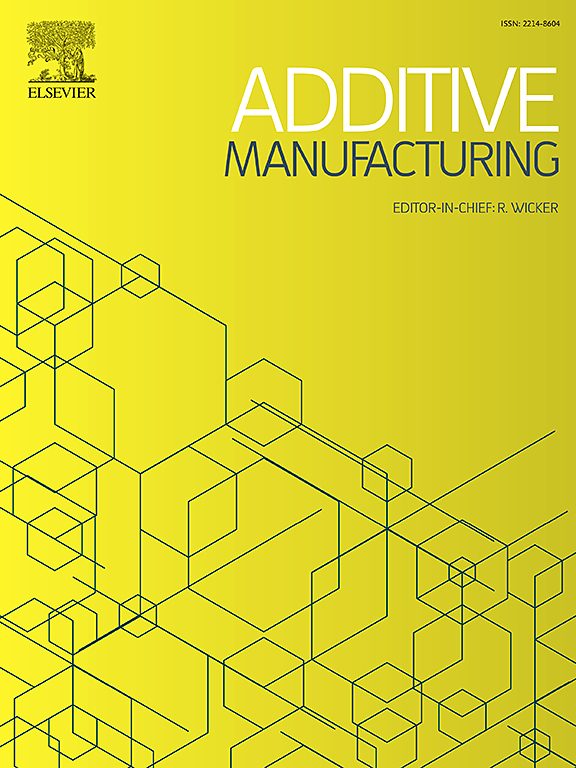Hydrophilic silicone-based ink derived from amphiphilic siloxane oligomers for the vat photopolymerization printing of embedded-channel fluidic devices
IF 10.3
1区 工程技术
Q1 ENGINEERING, MANUFACTURING
引用次数: 0
Abstract
The emergence of vat photopolymerization (VP) printing as an alternative fabrication method for fluidic devices has led to the rapid development of silicone-based resin material. However, most silicone-based resin materials are hydrophobic in nature, rendering them unsuitable for biomedical applications without post-processing. Herein, we introduce a new type of hydrophilic silicone-based resin material derived from vinyl-terminated amphiphilic siloxane oligomers, acrylamide, and glycidyl methacrylate, for the printing of fluidic devices. We demonstrate the strategy to overcome the challenges associated with amphiphilic-based formulation by adjusting the amphiphilic siloxane oligomer conformation with appropriate solvent blend, resulting in a silicone-based resin material with low pre-gel viscosity, high transparency, and hydrophilic characteristics. Besides, the developed material exhibits tunable elastic properties, excellent polar solvent resistance, and good biocompatibility. Upon photocuring depth tuning, the developed material displays high printing accuracy down to 200 µm in width and 50 µm in height. The material’s ability to replicate embedded fluidic channels with diverse shapes in one-step printing further shows its potential for fluidic device fabrication. The printed devices were revealed to be highly functional with the capability to process fluid at an elevated temperature of up to 100 ºC for 24 hours and a continuous flow rate of up to 20 mL/min. Further demonstration of the hydrogel beads synthesis for drug encapsulation reveals the feasibility of the printed device for real-world biomedical applications. The successful VP printing of hydrophilic silicone-based embedded-channel fluidic devices opened up new avenues for the fabrication of silicone-based fluidic devices for biomedical applications.
求助全文
约1分钟内获得全文
求助全文
来源期刊

Additive manufacturing
Materials Science-General Materials Science
CiteScore
19.80
自引率
12.70%
发文量
648
审稿时长
35 days
期刊介绍:
Additive Manufacturing stands as a peer-reviewed journal dedicated to delivering high-quality research papers and reviews in the field of additive manufacturing, serving both academia and industry leaders. The journal's objective is to recognize the innovative essence of additive manufacturing and its diverse applications, providing a comprehensive overview of current developments and future prospects.
The transformative potential of additive manufacturing technologies in product design and manufacturing is poised to disrupt traditional approaches. In response to this paradigm shift, a distinctive and comprehensive publication outlet was essential. Additive Manufacturing fulfills this need, offering a platform for engineers, materials scientists, and practitioners across academia and various industries to document and share innovations in these evolving technologies.
 求助内容:
求助内容: 应助结果提醒方式:
应助结果提醒方式:


